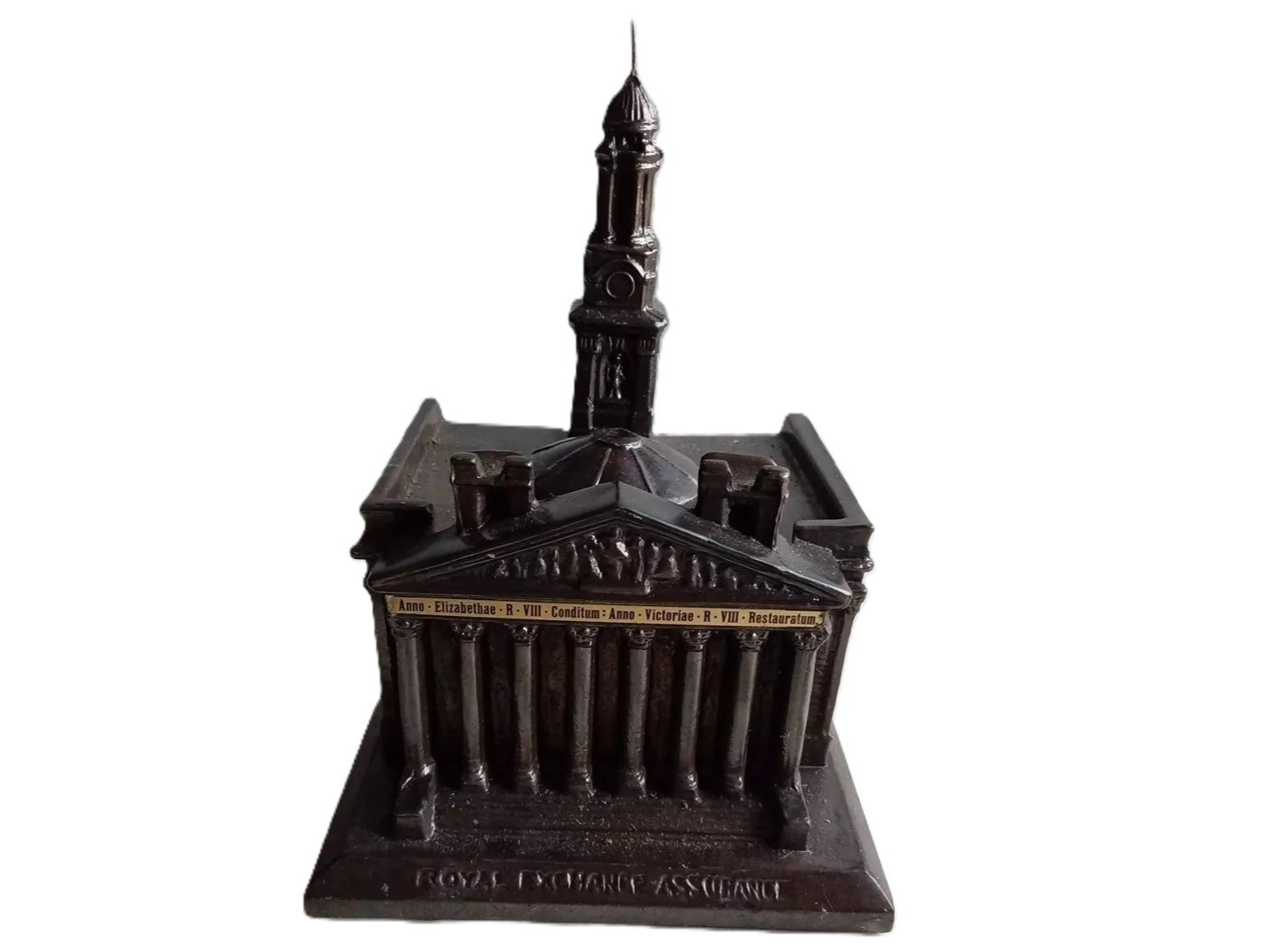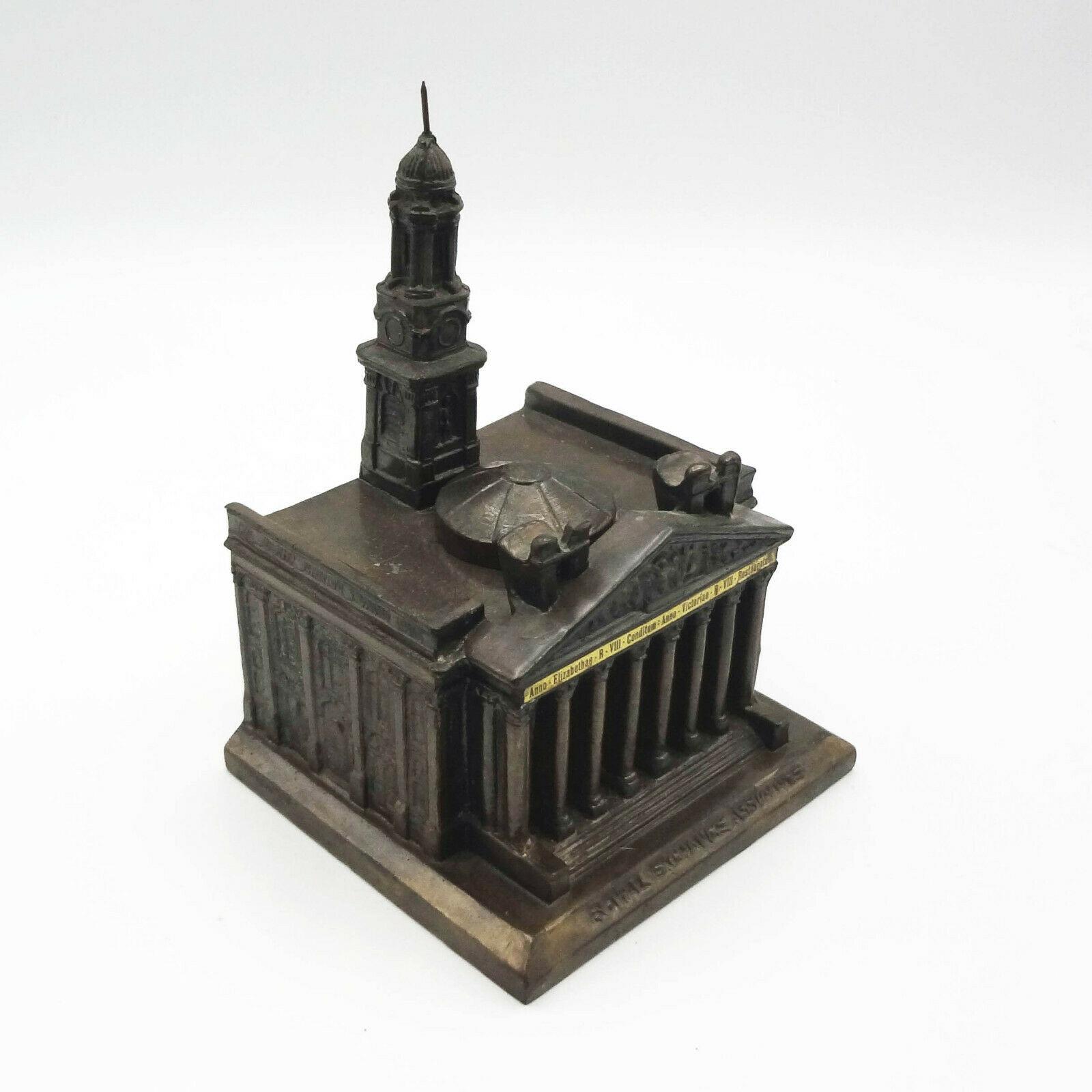
Royal Exchange Assurance Building in London
| Categories | Advertising |
| Type | Buildings / Structures |
| Material | Bronze finish |
| Markings | See narrative |
| Manufacturer | Undetermined |
| Origin | England |
| Date or Era | circa 1930 |
| Measuring | 3 ⅞” x 3 ½” x 5 ½” high |
An inkstand in the form of a detailed model of The Royal Exchange Assurance building in London. A cap in the shape of the Exchange’s dome covers the ceramic insert. A supporting bracket for a pen is incorporated into the model. A brass metal strip, replicating the gold-inscribed legend on the actual building, is affixed below the pediment and reads:
“Anno . Elizabeth . R . VIII . Conditum . Anno . Victoriae . R . VIII . Restauratum”
(Founded in the 13th year of Queen Elizabeth, restored in the eighth year of Queen Victoria)
The manufacturer made a mistake printing the year of founding. It should read XIII instead of VIII. The base is inscribed “Royal Exchange Assurance” and the cartouche on the rear reads “Royal Exchange / London / Head Office of the Royal Exchange Assurance / Incorporated AD 1720.”
Historical Background
Officially opened in 1571 by Queen Elizabeth I, The Royal Exchange in London was founded to act as a center of commerce for the City of London. It has twice been destroyed by fire and subsequently rebuilt. The present building was designed by Sir William Tite in the 1840s and adheres to the original layout, which consists of a four-sided structure surrounding a central courtyard where merchants and tradesmen could do business.
The internal works, designed by Edward I’Anson in 1837, made use of concrete, an early example of a modern construction method. It features pediment sculptures by Richard Westmacott (the younger), and ornamental cast ironwork by Henry Grissell’s Regent’s Canal Ironworks. It was opened by Queen Victoria on the 28th of October 1844. Traditionally, the steps of the Royal Exchange is where certain royal proclamations are read out and it is one of the locations where a herald proclaims the new monarch’s reign to the public. The western end of the building consists of a portico of eight Corinthian columns topped by a pediment containing a tympanum with a sculptured frieze by Richard Westmacott (the younger). The central figure represents Commerce, above an inscription from the Bible: “The Earth is the Lord’s, and the fulness thereof”.
Sold for $57 in September 2024
Content disclaimer. The information posted is the owner’s best knowledge and may not have been vetted by the SOIC. We welcome comments, corrections, and additions, working to make our website information comprehensive and accurate.
Join the Society of Inkwell Collectors (SOIC) – it’s free!
Founded in 1981 as a non-profit organization,
we are documenting inkwells (and accessories).
We’re here to help and inform!








